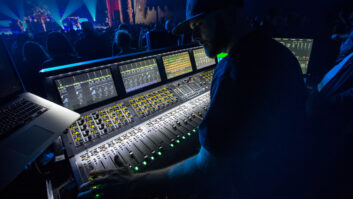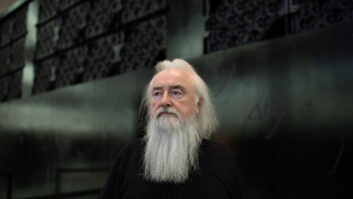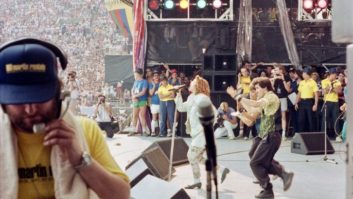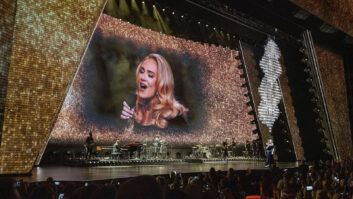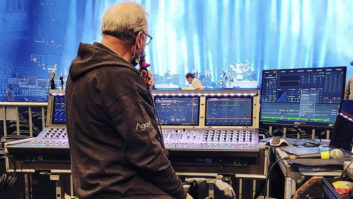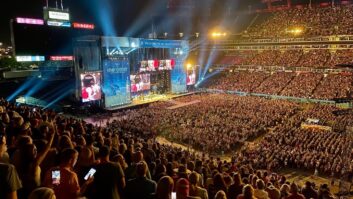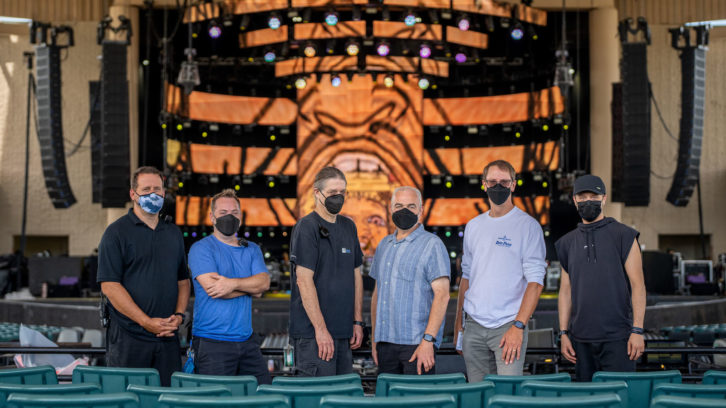
Part Two of Whatever It Takes explores the band’s house mix, monitor setup, miking and more. Don’t miss Part One, where the audio team reveals how the band and crew overcame Covid complications that nearly derailed the tour.
The Dave Matthews Band‘s house mix has evolved over time—a process augmented by a move to an Avid VENUE S6L console two years ago. “Jeff Thomas, who was our FOH engineer, had an Avid Profile, and originally I just took it over,” says Lyon. “I did a couple of refinements because the inputs changed a little bit, but not much. In 2019, I took that same file from the Profile and bumped it into the S6L platform, and it worked perfectly. Over the course of the COVID shutdown though, I stripped the file down to basics and built it up again with a lot of changes, so this the first year where it’s mainly my mix that you’re hearing, not ‘me mixing Jeff’s console.’ There’s a lot of cool things the S6L can do, too, that make things easier, like the bus-to-bus routing which I use for the drums. It’s made things a lot more consistent.”
Given that the band is so improv-oriented, there’s no point in using snapshots to corral the 90-plus inputs coming off the stage. “The band’s tempo will fluctuate a little bit from show-to-show,” says Lyon. “Even though it’s the same song , there’ll be a little bit of flow, depending on how charged up they are. Years ago, when we first moved to the digital desk, Jeff and I experimented with snapshots for songs, and it didn’t make sense for us; it backfired.”
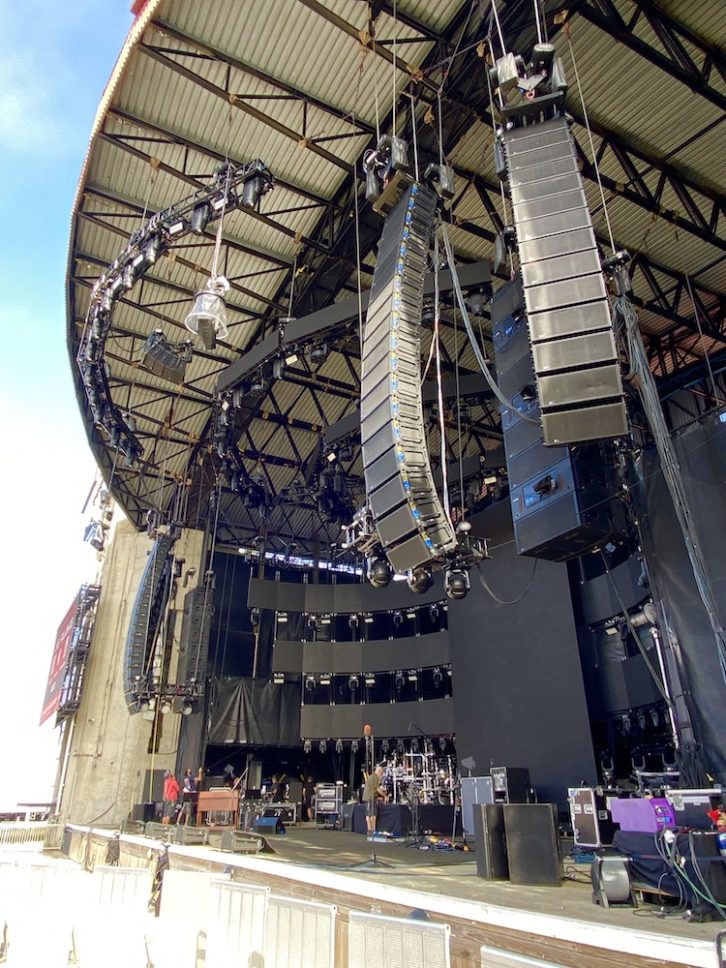
The house mix is relatively light on effects, so most of the plug-ins on-hand are for dynamic control, keeping a handle on gain before feedback. “Dave’s vocal gets a NR800 Noise Reduction Processor from McDSP. It’s kind of like a Cedar DNS—it’s a frequency-variable gate, so it can winnow out the noise in the background, but the instant he starts singing into the mic, everything turns all the way on. If he’s singing quietly, I may have to adjust the thresholds to let it open up a little more, but for the most part, I’ve got it at the spot where I can just forget it. I’ve got that same plug-in on all the vocals and on the Toms group.”
Up onstage, in-ear monitors rule the day with nearly the entire band on IEMs, the vast majority sporting Sensaphonics 3DME custom tour systems. “Sensaphonics’ whole thing is hearing conservation first,” says Kuhn. “The company’s run by an audiologist, not engineers, and we’ve always taken that to heart. The goal is to be able to hear our grandchildren and still put on shows where you feel that rock and roll feeling.” While guitarist Reynolds eschews IEMs, opting for Meyer MJF-212A monitors around the stage, that’s inevitable says Kuhn: “With the electric guitar, the air between the amp and yourself—and your relationship with that space—is part of your instrument.”
Vocals are captured with Sennheiser e935s, and along with a smattering of Shure and Sennheiser mics across the stage, there’s Earthworks on the drums for ‘under heads,’ placed beneath the cymbals, while sandwiched between Reynolds’ guitar amp and a sE Electronics Reflexion Filter sits a right-angled Shure 57, modded by Granelli Audio.
Making up for lost time caused by the pandemic, the Dave Matthews Band has been going non-stop since July, aiming to wrap up this month with back-to-back shows at New York City’s Madison Square Garden. It’s an ambitious run even in non-COVID times, but no doubt this year’s journey will always be defined by those Gorge shows. “That was what live sound is about: The show must go on!” said Kuhn. “We made it happen, it was very obvious that the audience loved it, and that’s what we’re ultimately here for—to put on a show for them, whatever it takes.”


